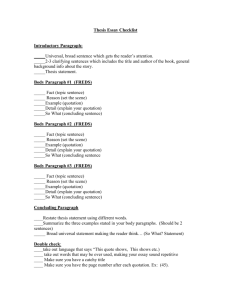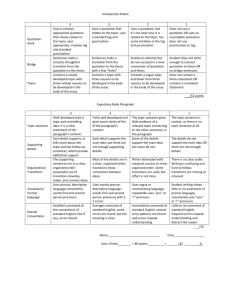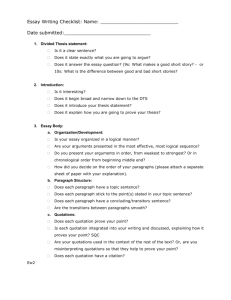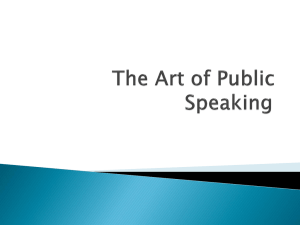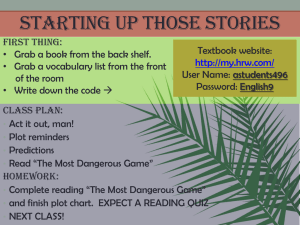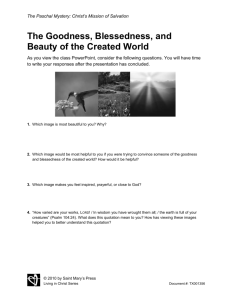Body Paragraph Model-Key Term and Summarized Example
advertisement
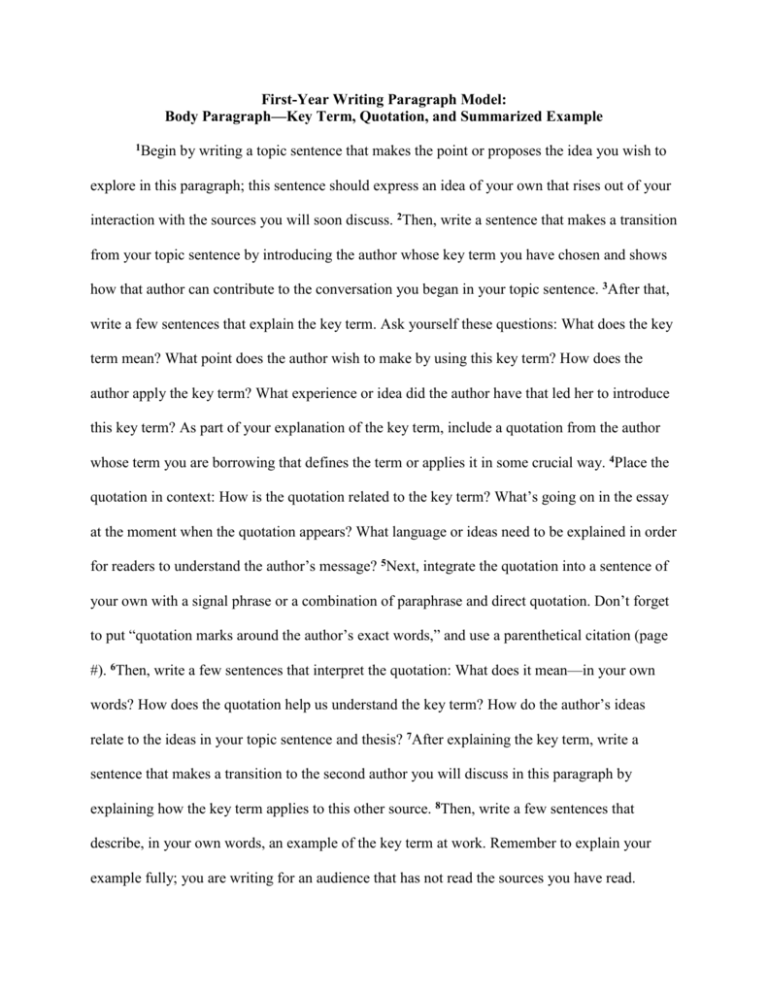
First-Year Writing Paragraph Model: Body Paragraph—Key Term, Quotation, and Summarized Example 1Begin by writing a topic sentence that makes the point or proposes the idea you wish to explore in this paragraph; this sentence should express an idea of your own that rises out of your interaction with the sources you will soon discuss. 2Then, write a sentence that makes a transition from your topic sentence by introducing the author whose key term you have chosen and shows how that author can contribute to the conversation you began in your topic sentence. 3After that, write a few sentences that explain the key term. Ask yourself these questions: What does the key term mean? What point does the author wish to make by using this key term? How does the author apply the key term? What experience or idea did the author have that led her to introduce this key term? As part of your explanation of the key term, include a quotation from the author whose term you are borrowing that defines the term or applies it in some crucial way. 4Place the quotation in context: How is the quotation related to the key term? What’s going on in the essay at the moment when the quotation appears? What language or ideas need to be explained in order for readers to understand the author’s message? 5Next, integrate the quotation into a sentence of your own with a signal phrase or a combination of paraphrase and direct quotation. Don’t forget to put “quotation marks around the author’s exact words,” and use a parenthetical citation (page #). 6Then, write a few sentences that interpret the quotation: What does it mean—in your own words? How does the quotation help us understand the key term? How do the author’s ideas relate to the ideas in your topic sentence and thesis? 7After explaining the key term, write a sentence that makes a transition to the second author you will discuss in this paragraph by explaining how the key term applies to this other source. 8Then, write a few sentences that describe, in your own words, an example of the key term at work. Remember to explain your example fully; you are writing for an audience that has not read the sources you have read. 9Then, write a few sentences that analyze the connection between the example you have chosen and the key term. Ask yourself these questions: How does the key term relate to the example? How can the second source help us understand the key term? How does the key term help us understand the second source? Does the key term apply differently to the second source than it does to the first? What new point can you make by applying this particular key term to this particular example? 10 Finally, write a few sentences that apply the connection you have made to the ideas in your topic sentence and thesis. How has making this connection led to a deeper, more nuanced understanding of the idea you set out to explore in this paragraph? The 10 Steps: 1. Topic Sentence 2. Transition 3. Explain key term 4. Context 5. Integration 6. Interpretation 7. Transition 8. Summarized example 9. Connection 10. Application Don’t forget: this paragraph model requires you to use a key term and a quotation from one source, and a summarized example from another.

